Life in the USA is not normal. It feels pointless and trivial to be talking about small looks at the fascinating natural world when the country is being dismantled. But these posts will continue, as a statement of resistance. I hope you continue to enjoy and learn from them. Stand Up For Science!
#240. The photos at top show the same diopside specimen as collected “in the wild” (right) and after some cleanup to remove the white calcite (left).
Diopside is a common pyroxene, calcium magnesium silicate, CaMgSi2O6, the magnesium end member in the diopside-hedenbergite series (hedenbergite is the iron end member). It would be unexpected for this to be pure calcium magnesium silicate, and there is almost certainly some amount of iron substituting for magnesium here. That is the nature of a solid solution, you can have any proportion of the two elements from 100%/0% to 0%/100%.
The Bald Mountain Skarn is northeast from Pipestone Pass, between Interstate 90 and Montana Hwy 2 in Jefferson County, Montana USA. It is part of a string of rocks caught between two distinct plutons of the Boulder Batholith, the Butte and Rader Creek Plutons. The two have slightly different compositions and are slightly different in age, but superficially they are quite similar granitic rocks.
The zone of rocks between the plutons is informally called “the screen” because they comprise a narrow linear zone of formerly sedimentary rocks that separate the plutons. This previous post addressed the mineralogy from a portion of the screen several miles northeast of Bald Mountain. The sediments, most likely from the Belt Supergroup and from Cambrian carbonates and siltstones, have been metamorphosed (“changed form,” due to heat and pressure) and metasomatized (“changed body,” meaning chemicals were introduced into the sedimentary rocks from the surrounding igneous bodies), and that’s essentially the definition of a skarn. Diopside is a typical mineral (called a calc-silicate for its composition) in skarns.
If forced to speculate, one might suggest that the protolith (the original rock) might have been the Cambrian Pilgrim Formation, simply because it tends to be the most dolomitic of the Cambrian carbonates, thereby providing a source for both calcium and magnesium (dolomite is calcium-magnesium carbonate) together with thin silty (silica rich) layers to generate the abundant diopside.
Diopside is monoclinic in terms of its crystallography, but its typical crystals are rather squarish, elongate prisms, which can be oriented in two different ways. “Diopside” means “double appearance” for this quality. At Bald Mountain, it’s also common for diopside to form the heart-shaped twin crystals you see in my photos (Knudsen, 2011, Vignettes of four Montana mineral localities (Crazy Sphinx mine, Sourdough mine, Bald Mountain, PC mine): 32nd Annual New Mexico Mineral Symposium Abstracts, p. 22-23). Knudsen also reports rare vesuvianite, apatite, and black spinel from Bald Mountain.
For the diopside in these photos, the contact or twin plane is one of the prism faces, which serves as a common plane shared by two crystallographically distinct entities. The reentrant angle at the tops of the two prominent twin pairs is distinctive and common in twins like these. The larger twin in the top photo is about 26 mm tall, and the two in the photos immediately above are 8 and 9 mm. Collected in 2016.
The Bald Mountain Skarn is also known for its red-brown grossular, the calcium-aluminum garnet. And although most of the calcite is white, Bald Mountain is also famous for some blue calcite (specimen above is about 25 mm across).
At Bald Mountain I collected some micros of two zeolites (above), including clinoptilolite, Ca3(Si30Al6)O72 · 20H2O, and probable thomsonite-Ca, NaCa2[Al5Si5O20] · 6H2O. The clinoptilolite was identified by Raman spectroscopy and is most likely clinoptilolite-Ca, but there’s probably at least some sodium and potassium in there too. Thomsonite is unconfirmed but is reasonable in the environment and consistent with the skarn chemistry, and the little rectangular laths are also consistent with thomsonite’s orthorhombic crystallography, but it could be some other zeolite as well (I’m happy to entertain other ideas).
Clinoptilolite’s name is from Greek words meaning oblique feather stone. It produces thin, feathery cleavage fragments when broken, and the cleavage is at an oblique angle to the main crystal faces. Thomsonite honors Thomas Thomson (1773-1852), mineral chemist and professor at the University of Glasgow, Scotland.




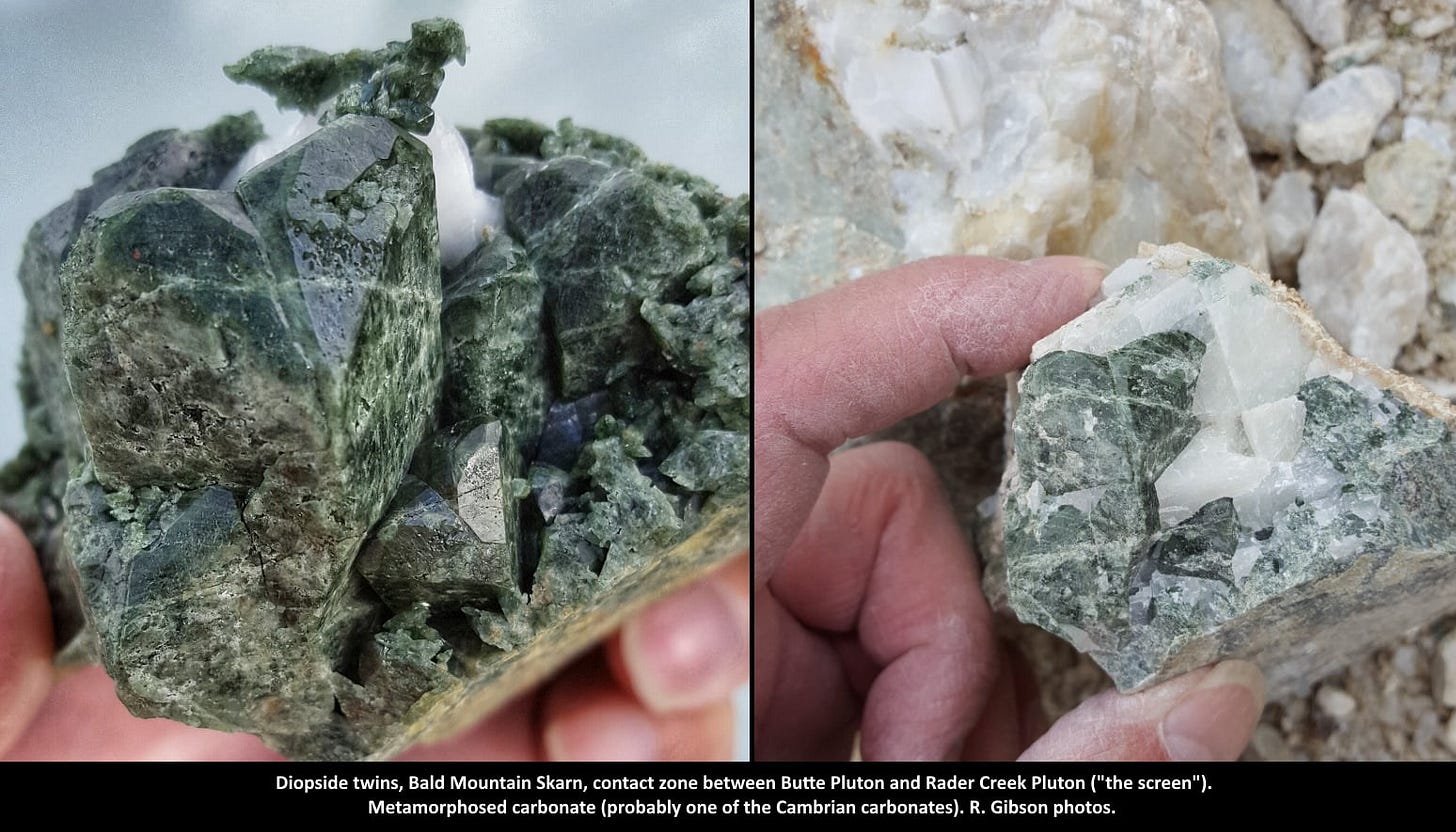
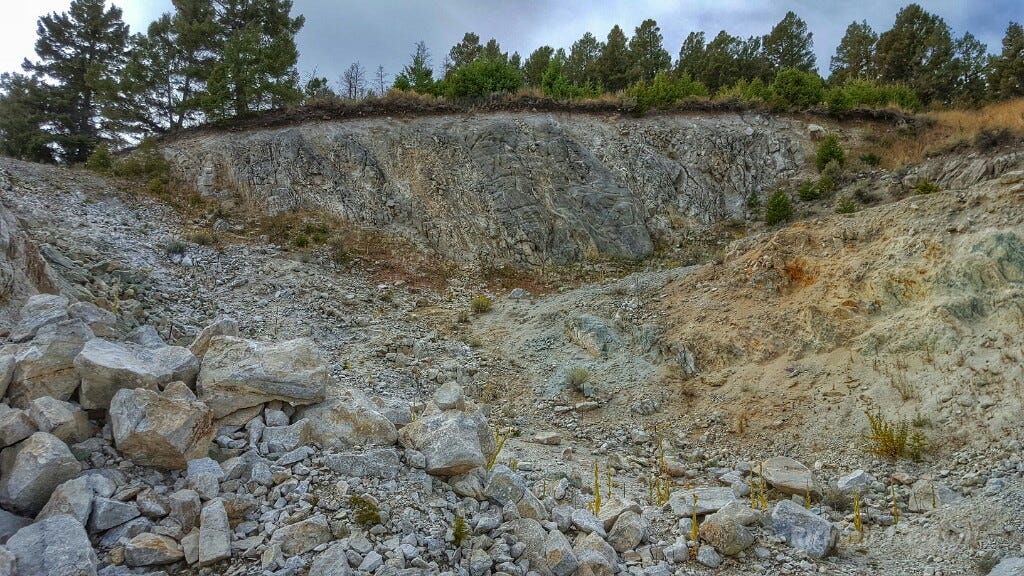
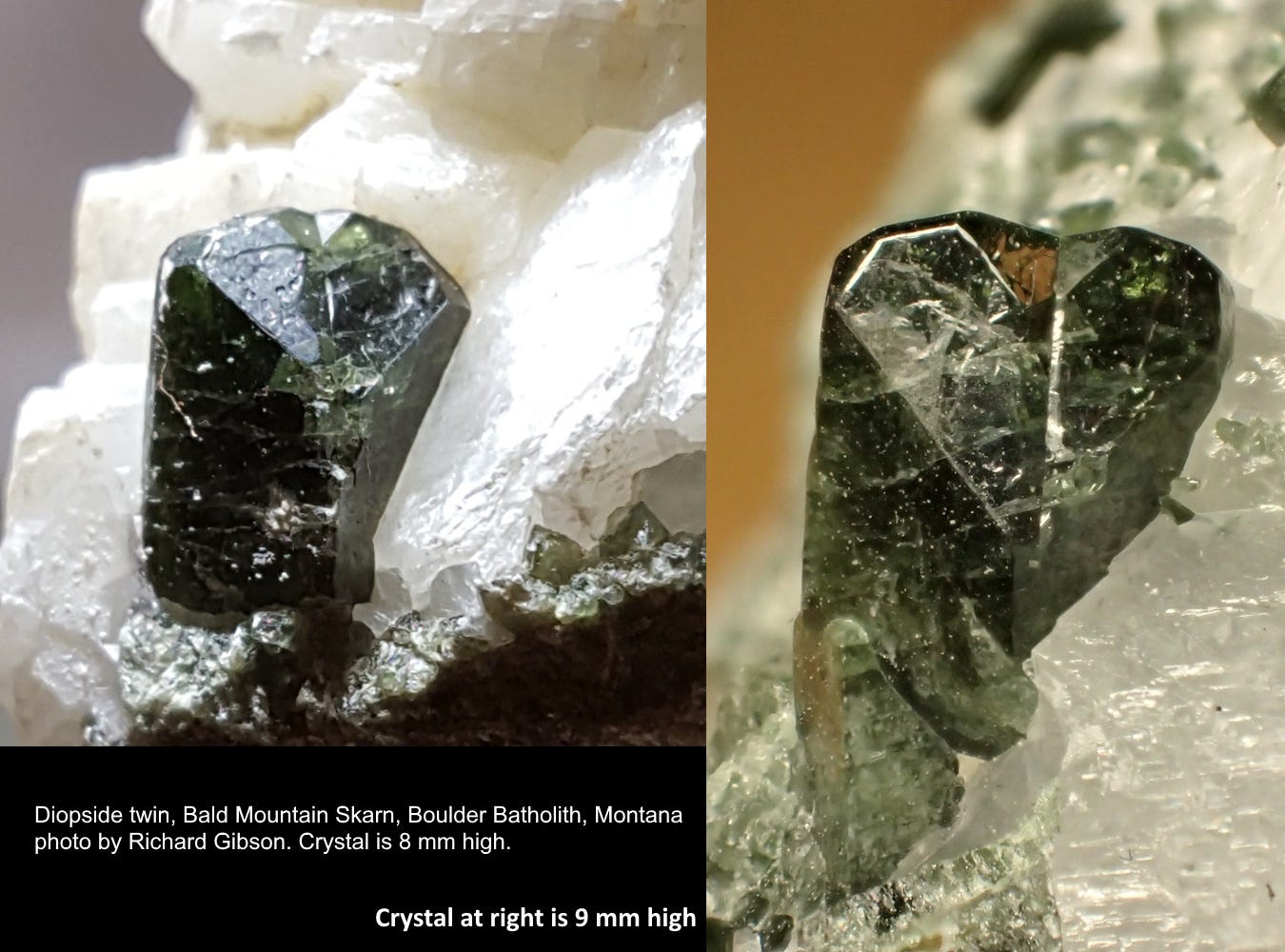
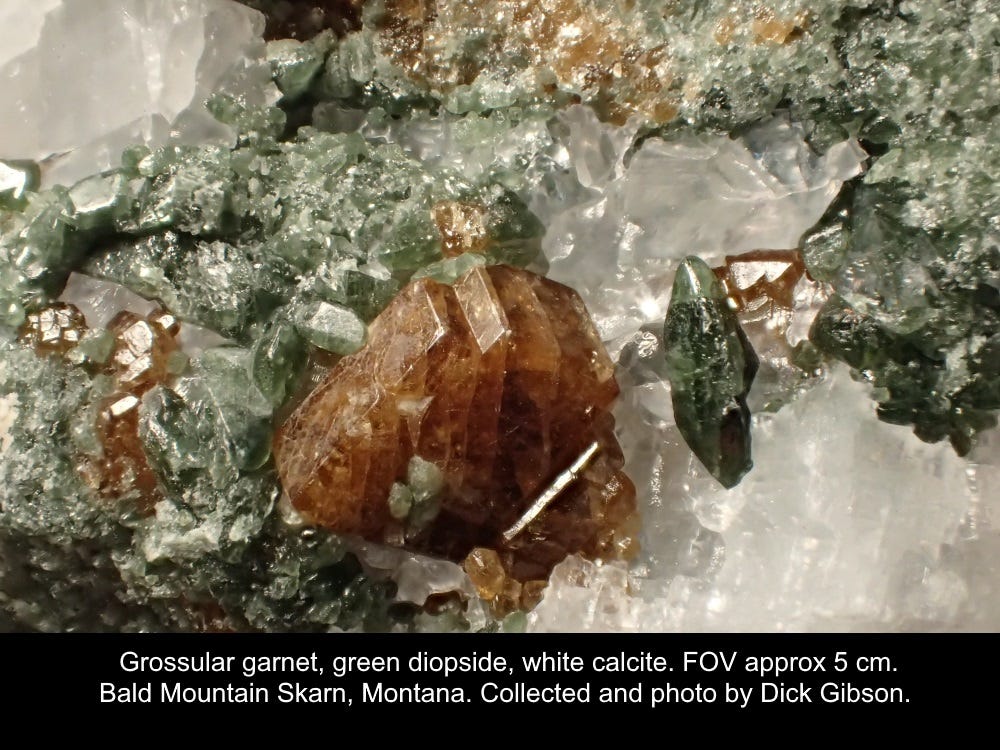
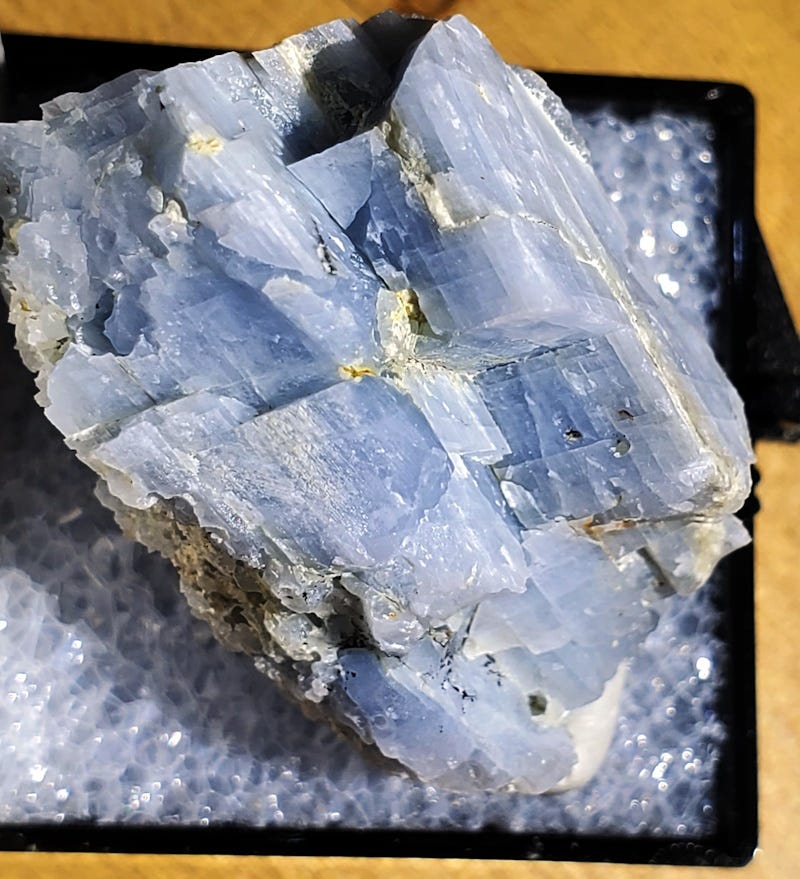
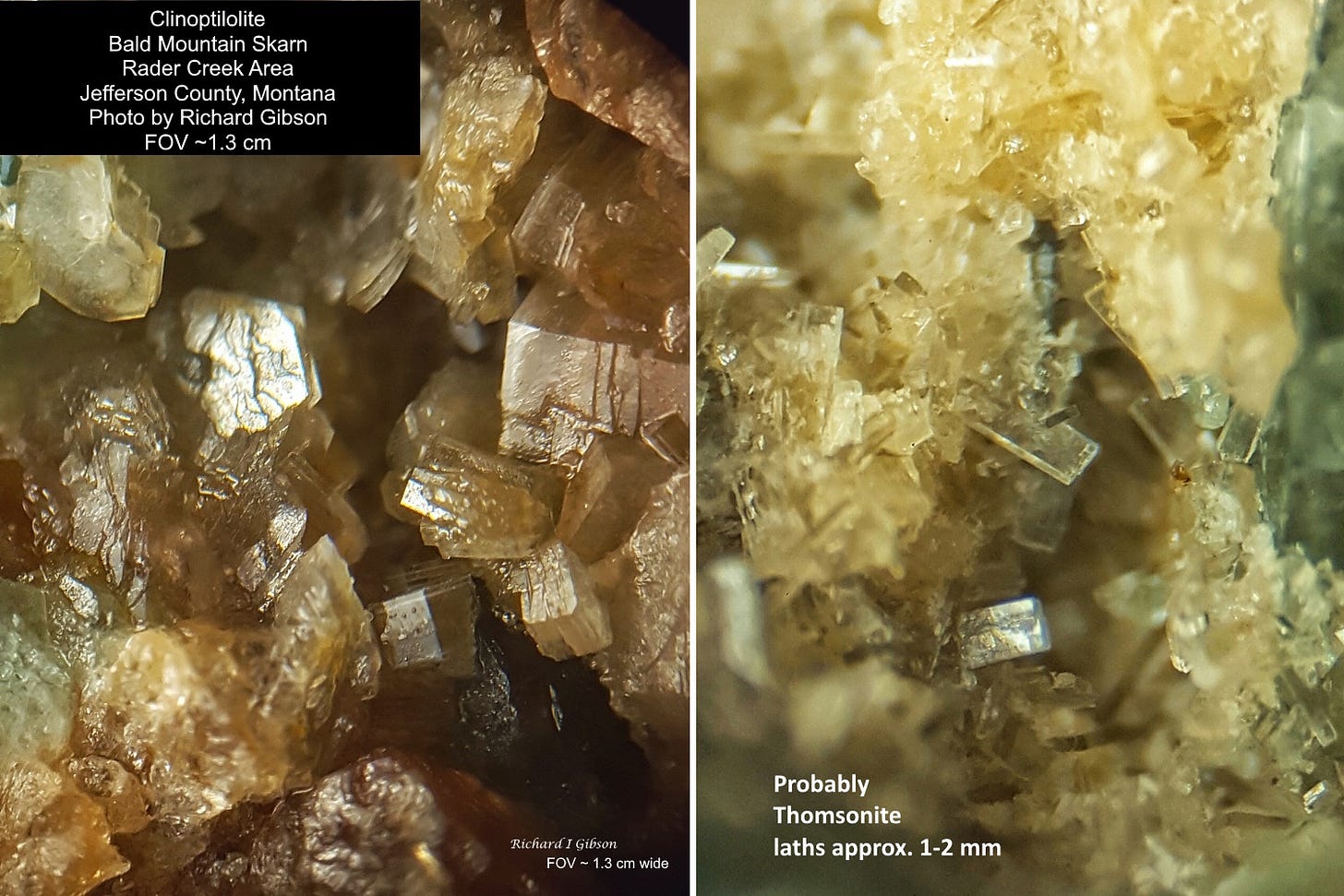
That diopside twinned xl is spiffy.
We have stellerite from a few locations with that "thomsonite" habit too Richard.